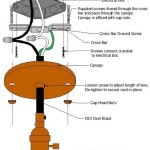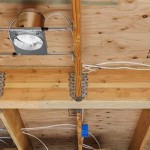Mastering Basement Ceiling Light Spacing for Optimal Illumination
Basements are often overlooked when it comes to lighting, resulting in dark and uninviting spaces. Proper basement ceiling light spacing is crucial for creating a well-lit and functional environment. Here's a comprehensive guide to help you determine the ideal spacing for your basement ceiling lights:
Factors to Consider
Several factors influence the optimal spacing between basement ceiling lights. These include:
- Ceiling Height: Higher ceilings require lights to be spaced farther apart, while lower ceilings call for closer spacing.
- Bulb Type: Incandescent bulbs produce more light than fluorescent or LED bulbs, allowing for wider spacing.
- Ceiling Fixture Style: Recessed lights require less spacing than pendant or chandelier fixtures.
- Desired Light Level: The amount of light required for tasks such as working, relaxing, or entertaining should be considered.
- Room Size: Larger rooms require more lights, while smaller rooms can get by with fewer.
General Spacing Guidelines
As a general rule, recessed lights should be spaced 6-8 feet apart in a grid pattern. Pendant lights can be spaced 3-5 feet apart, while chandeliers should be centrally located in the room. These guidelines can be adjusted based on the factors mentioned above.
Calculating Optimal Spacing
To calculate the optimal spacing for your basement ceiling lights, follow these steps:
- Determine the Maximum Spacing: Calculate the distance from the ceiling to the floor, and multiply it by 1.2. This is the maximum distance between lights.
- Calculate the Minimum Spacing: Calculate the distance from the ceiling to the floor, and multiply it by 0.75. This is the minimum distance between lights.
- Choose an In-Between Spacing: Select a spacing distance between the maximum and minimum values based on your desired light level and fixture style.
Additional Tips
Consider these additional tips for optimal basement ceiling light spacing:
- Use Dimmers: Dimmers allow you to adjust the light level as needed, making it easy to create the perfect ambiance.
- Add Task Lighting: Install additional lighting under cabinets, near desks, or in specific work areas for focused illumination.
- Choose Energy-Efficient Bulbs: LED or fluorescent bulbs are more energy-efficient than incandescent bulbs, reducing your energy consumption.
Conclusion
Proper basement ceiling light spacing is essential for creating a well-lit and functional space. By considering the factors and guidelines outlined in this guide, you can determine the ideal spacing for your basement, ensuring optimal illumination and a comfortable atmosphere.

Recessed Lighting Spacing How Many Lights Do I Need Far Apart Place My Jil Sonia Interior Designs

Free Recessed Lighting Calculator
Recessed Lighting In Basement Thoughts On Layout Diy Home Improvement Forum

Basement Lighting For Low Ceilings Tips And Ideas

How Many Recessed Lights Do I Need In My Basement Recessedlightspro

The Ultimate Basement Lighting Guide Lli Blog

How Many Recessed Lights Do I Need In My Basement Recessedlightspro

How To Layout Recessed Lighting In 5 Simple Steps Tutor

Basement Recessed Lighting Plan

How To Choose Basement Lighting Basements Plus
Related Posts








